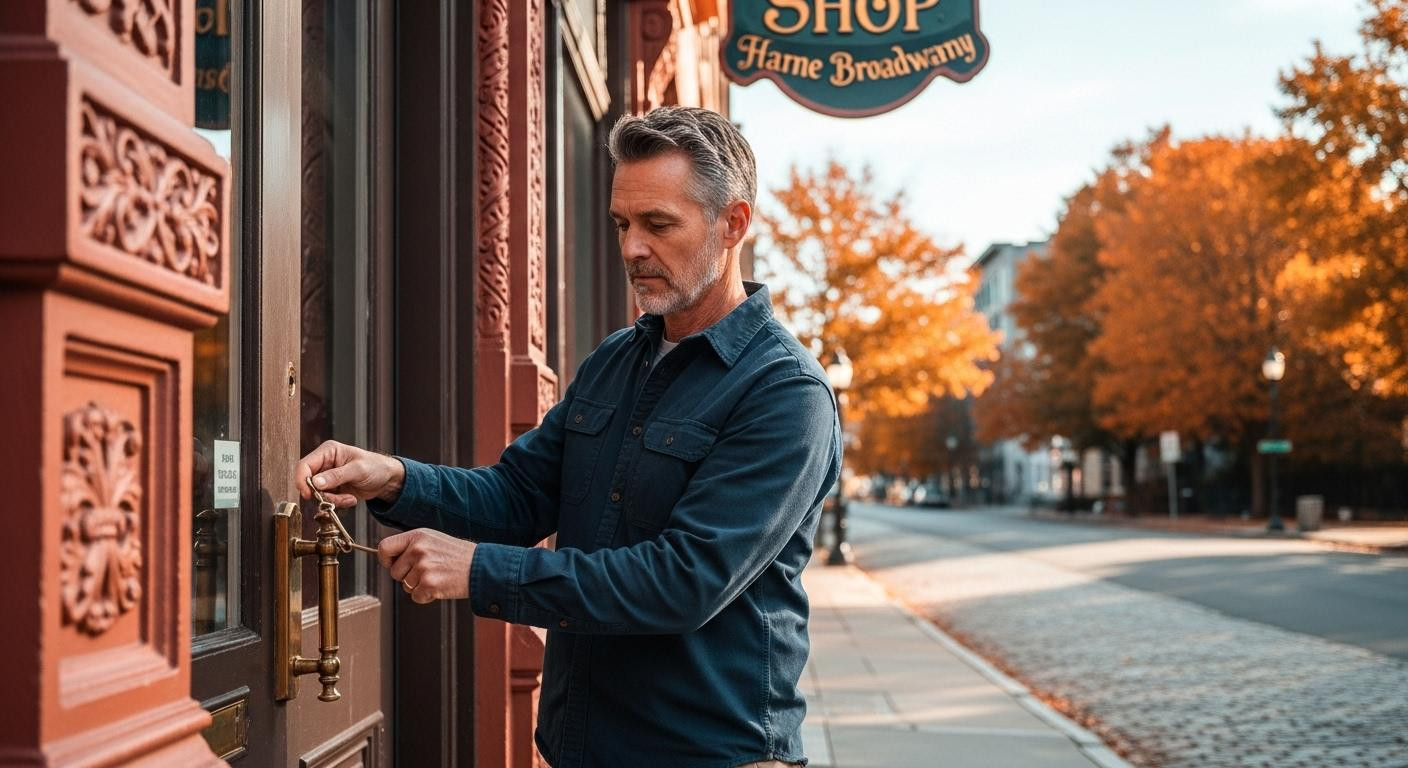At 6:47 AM on this November morning in 2025, steam rises from a coffee cup on Jim Thorpe’s Broadway Street. Golden light touches Victorian spires while a local unlocks the Mauch Chunk Museum three hours before tour buses arrive. This Pennsylvania town of 4,800 residents welcomes over 500,000 annual visitors who photograph the same facades, but most never learn the five unspoken cultural rules that separate respectful travelers from casual tourists. These rules reveal morning silence protocols, the controversial truth behind the town’s name, and why winter visits unlock the real Jim Thorpe that locals fiercely protect.
Rule #1: Never arrive after 9 AM in October
October draws peak foliage crowds, but residents guard a sacred window between 6:30-9 AM. During these hours, Kemmerer Park stands empty except for joggers. The Old Jail Museum’s handprint cell can be photographed without crowds.
The Lehigh Gorge Scenic Railway doesn’t begin excursions until 10 AM daily. Before then, birdsong echoes through the gorge instead of locomotive whistles. Asa Packer Mansion’s stained glass windows catch private morning light.
Data from the Carbon County Tourism Bureau shows visitor density peaks at 15,000+ people during October weekends between 10 AM-4 PM. Residents protect dawn hours through an unofficial understanding. As a local innkeeper who’s welcomed guests for 20 years explains, “Tourists sleep until 9. We live before then.”
The stories guidebooks don’t tell
Beyond Victorian architecture lies cultural complexity that most visitors never grasp. Two stories define this tension between tourism marketing and authentic history.
The handprint cell is about injustice, not ghosts
The Old Jail Museum’s famous “handprint” legend obscures brutal reality. The Molly Maguires were Irish coal miners fighting 16-hour workdays, company stores, and exploitative wages in the 1870s. Their controversial trials were marked by class warfare and ethnic persecution.
Museum records show only 35% of visitors pay the $12 admission to understand the history inside. Meanwhile, 92% photograph the exterior for social media. Local historians note this disparity with frustration. The handprint becomes Instagram content when it should prompt reflection on American labor rights history.
The Jim Thorpe name divides the town
The 1954 merger renamed Mauch Chunk to honor Olympic champion Jim Thorpe after his widow offered his remains to boost tourism. Many residents never agreed. The legendary athlete had zero connection to this coal town.
According to local archives, Thorpe’s son spent decades fighting to repatriate his father’s body. Recent visitor surveys show tourists gush about the bronze statue while some longtime residents quietly avoid it. This unspoken tension shapes the town’s ongoing identity crisis between authentic heritage and manufactured tourism appeal.
What locals actually do here
Residents have carved authentic experiences that exist parallel to tourist attractions. These practices reveal Jim Thorpe’s real daily rhythm.
Walk the Switchback Trail at dawn, not the train route
The Lehigh Gorge Scenic Railway serves tourists with 9 daily excursions carrying 400 people each. Locals avoid this congestion entirely. Instead, they hike the abandoned gravity railroad known as Switchback Trail.
This 9-mile path offers forest silence, panoramic views, and zero locomotive noise. The trail opens at sunrise and stays uncrowded until 11 AM. Carbon County data shows fewer than 200 daily users versus 4,000 train passengers during peak season.
Shop the Jim Thorpe Market, not Broadway boutiques
Broadway’s galleries cater to visitors seeking souvenirs. Residents shop on Susquehanna Street at the Jim Thorpe Market for PA Dutch cheese, homemade preserves, and fresh kielbasa.
The scent of warm pretzels and pickled vegetables fills this authentic space. Conversations in Pennsylvania Dutch dialects create an atmosphere tourists rarely experience. Market vendors have served local families for generations, not seasonal visitors seeking Instagram moments.
Winter reveals the real town
January through March transforms Jim Thorpe completely. Snow dusts Victorian mansions while streets empty of tour buses. Budget accommodations drop 40% from October rates of $250/night to $150/night.
The Old Jail’s cold cells feel authentically haunting without crowds pressing for selfies. St. Mark’s Church stained glass glows in solitude. Coffee shop conversations slow, eye contact returns between neighbors. Residents reclaim their town’s natural pace during these quiet months.
Carbon County tourism statistics show visitor numbers drop from 15,000+ daily in October to fewer than 2,000 in February. This dramatic shift allows locals to breathe and the town’s Victorian dignity to emerge from behind tourist facades.
Your Questions About Discovering the hidden history of Jim Thorpe, Pennsylvania Answered
What’s the best time to visit for cultural depth versus crowds?
January through March offers 90% fewer visitors than October while maintaining the town’s architectural beauty under snow. Locals have time for conversations about history. Spring months of April and May balance moderate crowds with blooming landscapes and reasonable accommodation rates around $175/night.
How do I respectfully engage with the Molly Maguires history?
Take the Old Jail Museum tour and ask about labor conditions and class conflict, not ghost stories. Visit the Mauch Chunk Museum’s coal mining exhibit to understand economic exploitation. According to museum staff, visitors who grasp these real stakes earn respect from locals who appreciate historical awareness over supernatural entertainment.
Is Jim Thorpe more authentic than other Pennsylvania heritage towns?
Compared to commercialized New Hope or resort-heavy Pocono Mountains towns, Jim Thorpe maintains stronger preservation ethics and fewer chain businesses. Of 55 surveyed local businesses, 80% are family-owned operations. However, authenticity requires engaging the complex coal legacy and name controversy, not just photographing Victorian facades for social media posts.
Dawn light touches the handprint cell’s iron bars at 7 AM while steam rises from your thermos. No tour groups for two hours. The town’s unspoken rules aren’t restrictions but invitations to slow down, dig deeper, and discover the layered history that 500,000 annual visitors rush past without ever truly seeing.
